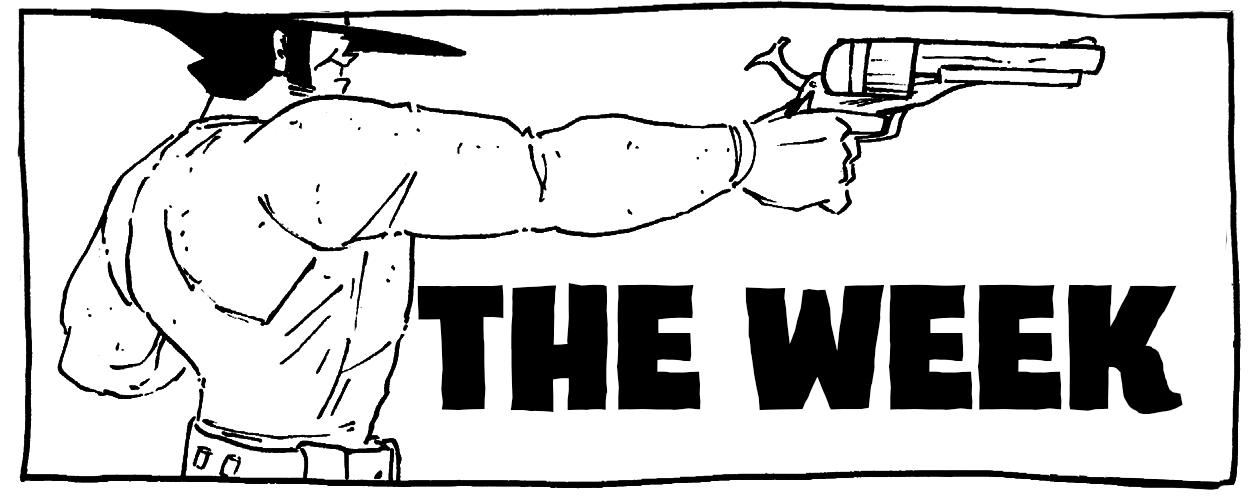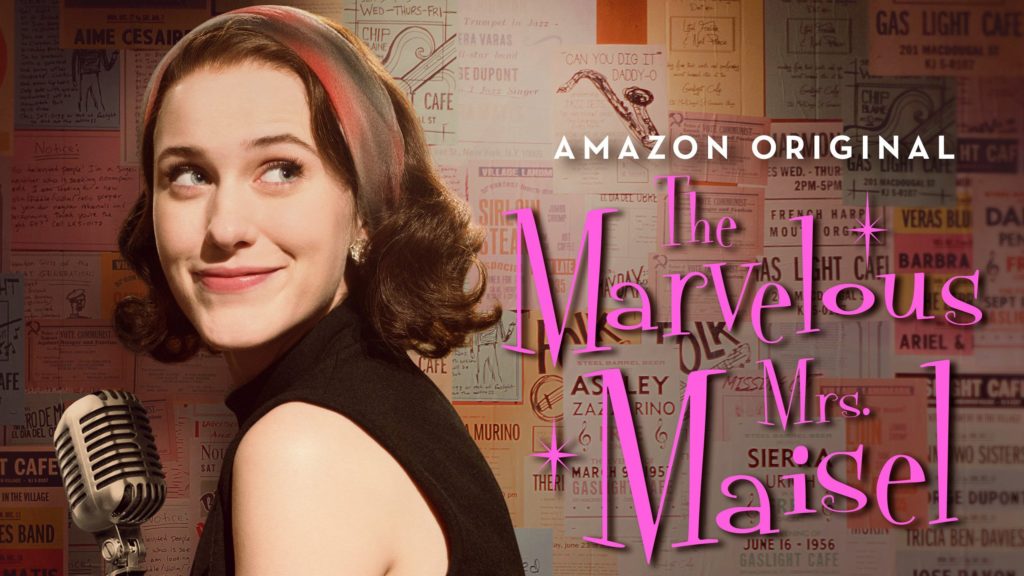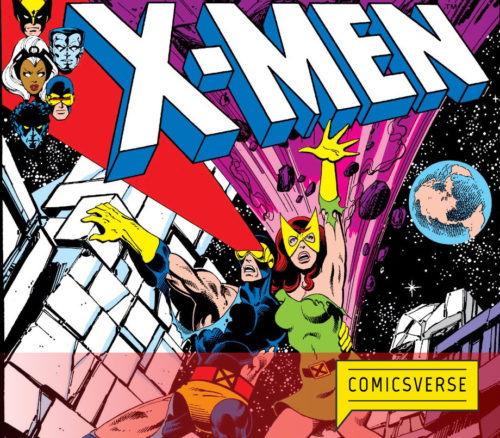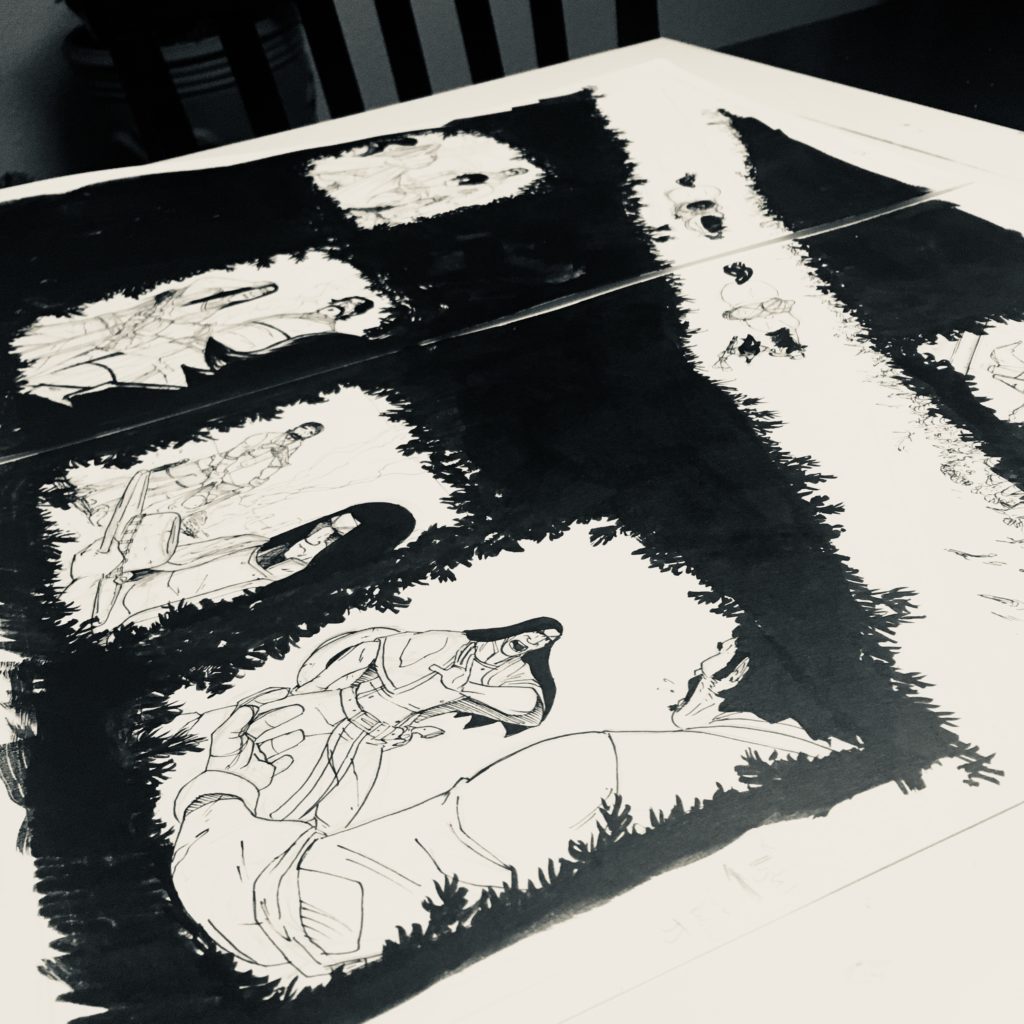The Week

This week school was back in session and an artistic dry spell came to a close. Here are the things that have grabbed my attention this week.
LISTENING
One thing that I hope has become clear on this site and at the site for my podcast, A Podcast [ , ] For All Intents and Purposes, is that I think way too hard about things like comic books, video games, and other things. However, what I hope is also clear is that this line of critical thought comes from my academic background––it’s how I was taught and, more importantly, how I learned to think about texts be they two hundred year old poems or the latest episode of Doctor Who. The last thing that I hope is clear, with those two other points in mind, is that even though I think too hard about this stuff and try to extract deeper meaning from it, I also don’t put things like comics and video games on a pedestal. In the end, I realize they are pop culture artifacts and, as such, are meant to be disposable and, superficially at least, entertainment. That’s why I don’t really care about the same things that a lot of nerdy brethren care about, such as continuity (with comics) and cutting-edge technological achievements (as with video games). I find a lot of that to be more about posturing and gate-keeping than actually having discussions about these things. However, that does not exclude the possibility of these works from saying more than their intent. Indeed, we’ve seen creators put more intent into their works and many of those have risen above the rest.
That being said, I also like to see other people have academic conversations about these things and the website Comicsverse has really rung my bell in that regard. It doesn’t hurt that the founder and CEO is a big X-Men fan and, therefore, a lot of the talk on the site (both in their written articles and podcasts) have focused on that franchise, of which I have not hidden my own appreciation.
With the next main X-Men movie being titled X-Men: Dark Phoenix, it references the most famous story of the franchise, now called “The Dark Phoenix Saga” which was a story written by Chris Claremont and co-plotted and penciled by John Byrne (with inks by Terry Austin) in The Uncanny X-Men. The story was told over nine months in 1980 between issues #129-138 that shows the rise and fall of one of the team’s founding members, Jean Grey. The plot takes an interesting arc as it follows Grey from being the weakest member of the team to being, unequivocally, the most powerful and having to deal with the consequences of that power. Despite using characters that wear tights and shoot lasers from their eyes and , it’s a subtle and patient story, one that rewards with re-readings.
The story is the favorite of Comicsverse as well, having originally devoted three episodes (over an hour long each) to covering it (and it’s followups in the comic’s continuity) and now hitting it again but with a specific lens over the course of two hours. It’s a panel-based format and I loved every second of it. The Comicsverse crew always provide thoughtful commentary and analysis and, even when I don’t agree with their take or points of view, I appreciate the work they put into these conversations to the point that I ashamedly try to chime in while walking the dog and listening.
WATCHING

source: Amazon
- The Marvelous Mrs. Maisel
In truth, my wife and I finished watching this Amazon show a few weeks ago and I can’t stop thinking about it. It’s a wonderful period piece that hilariously (and touchingly) deals with wonderful, pertinent themes such as rejection, creativity, and self-doubt, not to mention the autonomy of women in the 1950s. What’s also interesting about the show is how it brings in history to work with the themes (and plot). Part of the plot of the show is about a woman who decides, in the late 1950s, to become a stand-up comedian (or comedienne, I guess), and her style is much more personal and expressive than the mere one-liners and character work that were popular at the time, instead looking forward at what comedy would become. To that end, the real-life controversial comedian, Lenny Bruce, becomes an interesting character in the show, helping the eponymous Mrs. Maisel on her way without her even knowing it (at first).
Shows about performance tend to struggle under the weight of their promise. What I mean by that is that plenty of movies and tv shows are based around the idea of the protagonist being gifted at what they do, but when it comes time for the audience to actually see the performance, it’s underwhelming. Though it’s my own opinion––and a rather unqualified one at that––The Marvelous Mrs. Maisel actually holds up to its promise. While the comedy it presents in itself is not revolutionary, when considering it within the historical context of the narrative, it makes sense, especially if you have a working knowledge of stand-up history. Even with my tangential working knowledge of the development of stand-up comedy, the comedy of Mrs. Maisel worked very well, though it is but a small part of the overall story of the show, which is the actual draw.
For a show, the best I can say about The Marvelous Mrs. Maisel is that it is wholly well-rounded. It delivers on a variety of fronts that always kept me guessing and wanting more and I’m excited it has a second season on the way.
LONG JOHN UPDATE
I mentioned last week how I was stuck on a two-page spread. It was a conundrum that, when presented with the final product, can be underwhelming. I run the risk of “spoiling” to much by sharing the page, so I’ll share a slightly abstracted version which I shared on my Instagram account. What help me up is that it is a scene that answers, in flashback, a lot of questions asked in volume 1 and 2 of Long John, and I wanted to make sure I chose the absolute right images to flash back to. I’m still not convinced I made all the right choices––I even for the first time––made some slight edits (not artistically, just structurally) in Photoshop to make it a more accurate read, but I think I got there.
More than anything, as the end of Chapter 3 approaches, I realize how much bringing this to a close can be messed up if treated with a cavalier attitude. As mentioned before, Chapter 3 brings the first “arc” of Long John to a close, so it needs to be not only satisfactory, but it needs to be satisfying as well. Though I agonize over dialogue––and will continue to do so––bringing the visuals of Chapter 3 to a satisfying conclusion has been agonizing, but one that is proving to be well worth it in the long run (as stated earlier, I tend to overthink this stuff, so gridlock should be expected). So, this week, I bring you––from slightly different angles––a “before” followed by an “after.”
It looks like the content of this book will be about 35 pages, 36 if you count what I call the “white page” that ends every chapter––the singular image that kind of puts a bow on the story of the issue.




Discussion ¬